Which of these Norwegian Christmas traditions is the strangest?
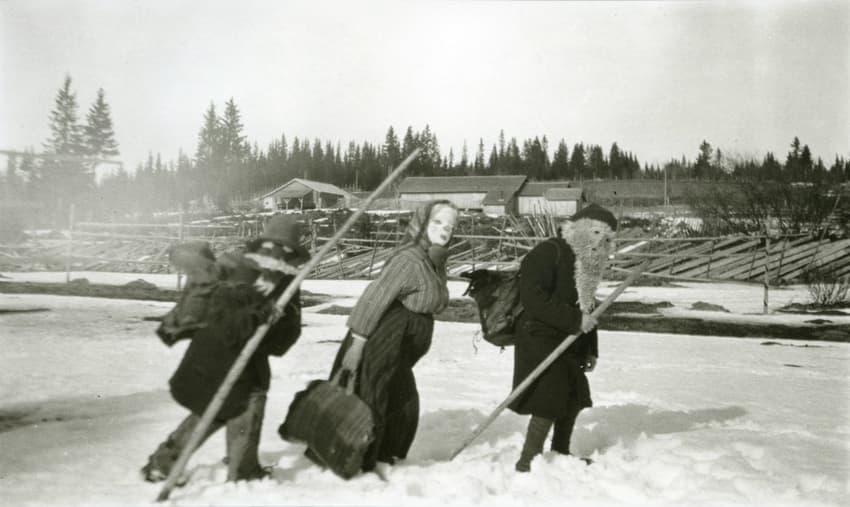
A Norwegian Christmas is a lot more than gingerbread, gløgg and tasteful decor.
From dressing up as a goat-like devil when you go out 'julebukking' to leaving porridge for your ill-tempered house spirit, Norway has certainly kept more pagan jul traditions than many other Christmas-celebrating countries.
Here are some of the country's weirder traditions.
Marzipan pigs
There's something gloriously bizarre about the prize traditionally given to whoever finds the almond Norwegian parents drop in the special Christmas porridge. And speaking of bizarre, last year two Norwegian artists took the tradition one step further by making a world-record marzipan pig, complete with a giant pile of marzipan poo.
Watching ancient Disney cartoons
 It's only in the Nordic countries that anyone knows who Ferdinand the Bull is. But that's because everyone has watched the exact same ten cartoons every Christmas Eve since 1953. Disney's 'Donald Duck og vennene hans', or 'Donald Duck and his Friends', goes out this Christmas on NRK at 3pm, as it has done every year for as long as anyone remembers. To those who aren't in on the joke, this is very odd indeed.
Trick-or-treating at Christmas
There's little difference between what Norwegians do when they går julebukk, and what the rest of the world does at Halloween. Children travel in costume from house to house, singing in exchange for sweets. If adults go too, they are ideally so well disguised as to be unrecognisable. They then drink a glass of akvavit at every house, ideally until they are incomprehensible.
By the way, if you think the adults who går julebukk today seem eery, it's nothing to what they looked like back in the day:
It's only in the Nordic countries that anyone knows who Ferdinand the Bull is. But that's because everyone has watched the exact same ten cartoons every Christmas Eve since 1953. Disney's 'Donald Duck og vennene hans', or 'Donald Duck and his Friends', goes out this Christmas on NRK at 3pm, as it has done every year for as long as anyone remembers. To those who aren't in on the joke, this is very odd indeed.
Trick-or-treating at Christmas
There's little difference between what Norwegians do when they går julebukk, and what the rest of the world does at Halloween. Children travel in costume from house to house, singing in exchange for sweets. If adults go too, they are ideally so well disguised as to be unrecognisable. They then drink a glass of akvavit at every house, ideally until they are incomprehensible.
By the way, if you think the adults who går julebukk today seem eery, it's nothing to what they looked like back in the day:
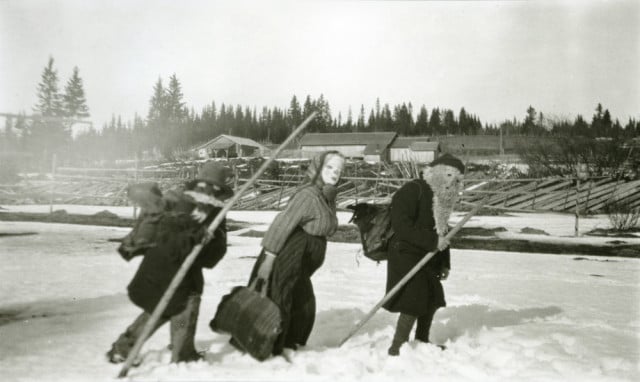 Eating ribs instead of roasts
Eating ribs instead of roasts
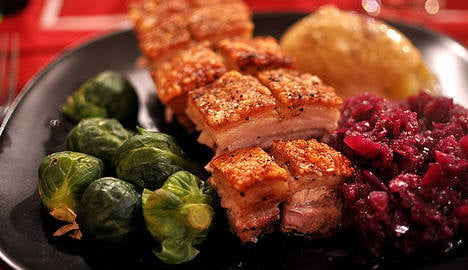
Photo: AnneCN
When Norwegians sit down for their Christmas meal, it's either pork (julribbe) or lamb (pinnekjøtt) ribs for the main course. Not a turkey in sight.
Dancing around the Christmas tree
Foreigners who marry into Norwegian families can be disconcerted when asked to join hands and dance around the tree. The strangeness is only increased when accompanied by songs from God Jul, the 1967 album by Norwegian show band Dizzie Tunes.
Watching Tre Nøtter til Askepott
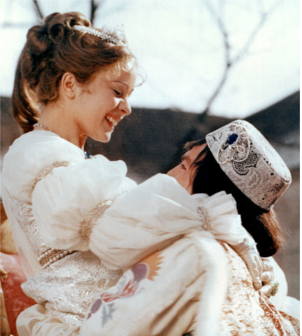 Norwegians would feel their Christmas was incomplete without watching Tre Nøtter til Askepott, or Three Hazelnuts for Cinderella, an East German-Czechoslovak adventure film from the early 1970s. If anything this is even weirder than the cartoons.
Making terrible attempts to play Santa
At Norwegian Christmas celebrations, Santa Claus, or julenissen, actually turns up. How can Norwegian children believe in Father Christmas when they get to meet him face-to-face? After popping out "to get the paper", a parent or other relative returns with a fake beard and some kind of heavy coat and hat. Few children are deceived.
Going overboard on julekjeks
Norwegians would feel their Christmas was incomplete without watching Tre Nøtter til Askepott, or Three Hazelnuts for Cinderella, an East German-Czechoslovak adventure film from the early 1970s. If anything this is even weirder than the cartoons.
Making terrible attempts to play Santa
At Norwegian Christmas celebrations, Santa Claus, or julenissen, actually turns up. How can Norwegian children believe in Father Christmas when they get to meet him face-to-face? After popping out "to get the paper", a parent or other relative returns with a fake beard and some kind of heavy coat and hat. Few children are deceived.
Going overboard on julekjeks
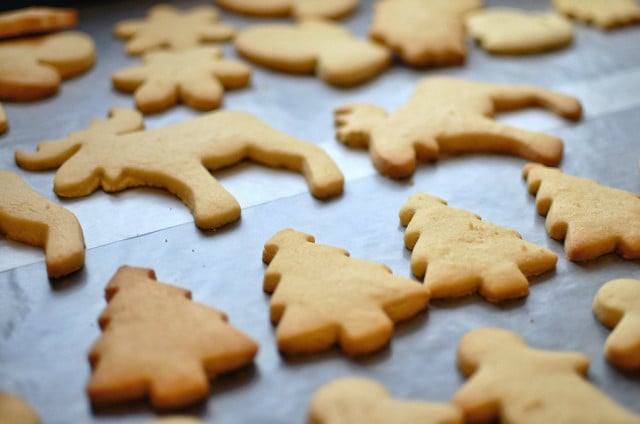 Photo: wizzer2801/Creative Commons
According to some traditions, Norwegians are supposed to bake no fewer than seven varieties of biscuit in the weeks leading up to Christmas Eve. Indeed, so important is the pre-Christmas bake, that Norwegians have even spurred butter shortages from their hoarding.
Leaving porridge out for the nisse
If the nisse, a sort of gnome-like guardian spirit who lives in Norwegian barns, doesn't get porridge left out for him with big dollop of butter on top, Norwegians believe he will wreak vengeance by playing mean tricks such as tying cows' tails together. It's a much more serious matter than leaving a glass of sherry for Father Christmas.
Photo: wizzer2801/Creative Commons
According to some traditions, Norwegians are supposed to bake no fewer than seven varieties of biscuit in the weeks leading up to Christmas Eve. Indeed, so important is the pre-Christmas bake, that Norwegians have even spurred butter shortages from their hoarding.
Leaving porridge out for the nisse
If the nisse, a sort of gnome-like guardian spirit who lives in Norwegian barns, doesn't get porridge left out for him with big dollop of butter on top, Norwegians believe he will wreak vengeance by playing mean tricks such as tying cows' tails together. It's a much more serious matter than leaving a glass of sherry for Father Christmas.
Comments
See Also
From dressing up as a goat-like devil when you go out 'julebukking' to leaving porridge for your ill-tempered house spirit, Norway has certainly kept more pagan jul traditions than many other Christmas-celebrating countries.
Here are some of the country's weirder traditions.
Marzipan pigs
There's something gloriously bizarre about the prize traditionally given to whoever finds the almond Norwegian parents drop in the special Christmas porridge. And speaking of bizarre, last year two Norwegian artists took the tradition one step further by making a world-record marzipan pig, complete with a giant pile of marzipan poo.
Watching ancient Disney cartoons

It's only in the Nordic countries that anyone knows who Ferdinand the Bull is. But that's because everyone has watched the exact same ten cartoons every Christmas Eve since 1953. Disney's 'Donald Duck og vennene hans', or 'Donald Duck and his Friends', goes out this Christmas on NRK at 3pm, as it has done every year for as long as anyone remembers. To those who aren't in on the joke, this is very odd indeed.
Trick-or-treating at Christmas
There's little difference between what Norwegians do when they går julebukk, and what the rest of the world does at Halloween. Children travel in costume from house to house, singing in exchange for sweets. If adults go too, they are ideally so well disguised as to be unrecognisable. They then drink a glass of akvavit at every house, ideally until they are incomprehensible.
By the way, if you think the adults who går julebukk today seem eery, it's nothing to what they looked like back in the day:

Eating ribs instead of roasts

Photo: AnneCN
When Norwegians sit down for their Christmas meal, it's either pork (julribbe) or lamb (pinnekjøtt) ribs for the main course. Not a turkey in sight.
Dancing around the Christmas tree
Foreigners who marry into Norwegian families can be disconcerted when asked to join hands and dance around the tree. The strangeness is only increased when accompanied by songs from God Jul, the 1967 album by Norwegian show band Dizzie Tunes.
Watching Tre Nøtter til Askepott

Norwegians would feel their Christmas was incomplete without watching Tre Nøtter til Askepott, or Three Hazelnuts for Cinderella, an East German-Czechoslovak adventure film from the early 1970s. If anything this is even weirder than the cartoons.
Making terrible attempts to play Santa
At Norwegian Christmas celebrations, Santa Claus, or julenissen, actually turns up. How can Norwegian children believe in Father Christmas when they get to meet him face-to-face? After popping out "to get the paper", a parent or other relative returns with a fake beard and some kind of heavy coat and hat. Few children are deceived.
Going overboard on julekjeks

Photo: wizzer2801/Creative Commons
According to some traditions, Norwegians are supposed to bake no fewer than seven varieties of biscuit in the weeks leading up to Christmas Eve. Indeed, so important is the pre-Christmas bake, that Norwegians have even spurred butter shortages from their hoarding.
Leaving porridge out for the nisse
If the nisse, a sort of gnome-like guardian spirit who lives in Norwegian barns, doesn't get porridge left out for him with big dollop of butter on top, Norwegians believe he will wreak vengeance by playing mean tricks such as tying cows' tails together. It's a much more serious matter than leaving a glass of sherry for Father Christmas.

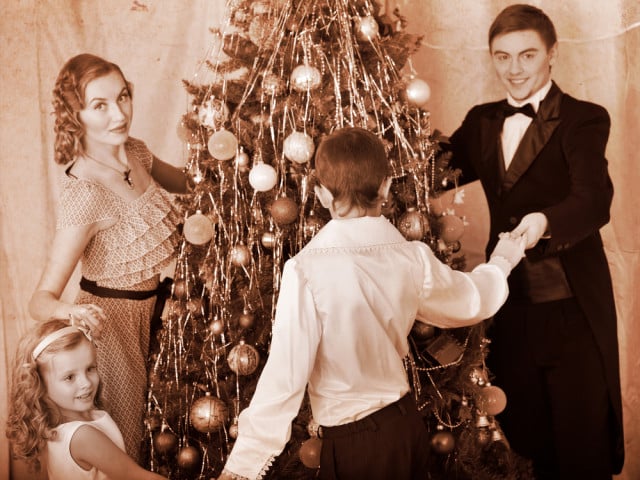


Join the conversation in our comments section below. Share your own views and experience and if you have a question or suggestion for our journalists then email us at [email protected].
Please keep comments civil, constructive and on topic – and make sure to read our terms of use before getting involved.
Please log in here to leave a comment.